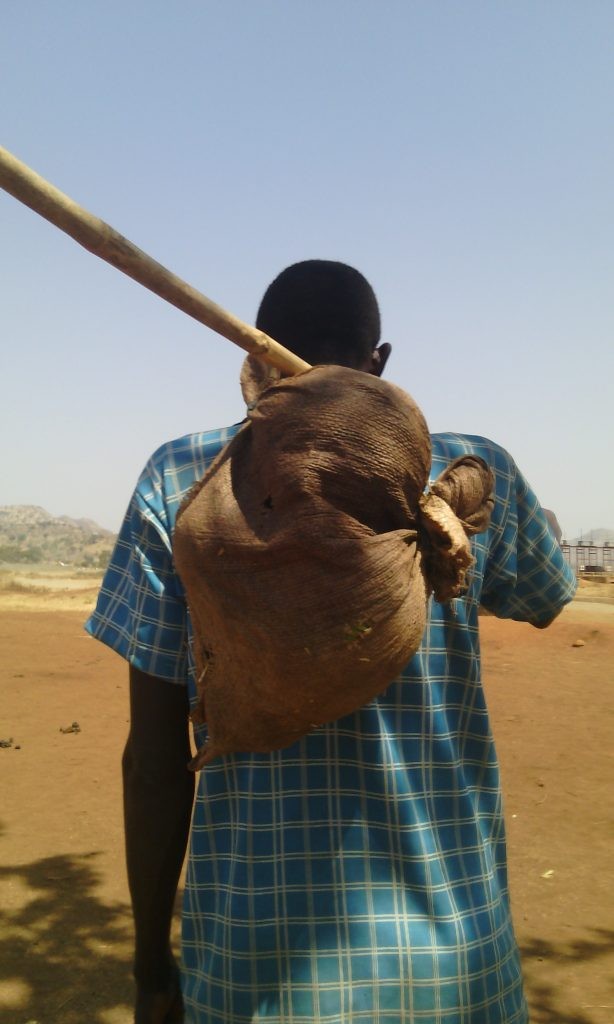“I used to be a hard-working farmer, harvesting 50-60 quintals of crop every year. When my land was taken by the sugar project, I got compensated with other land that it is not as fertile: it can produce only 5 quintals per year. This is not enough to feed a family!”
Dereje is an Ethiopian farmer, and this is his experience of how the Beles Sugar Development Project, a large-scale, government-owned scheme, has changed his life. Surprisingly, Dereje’s sister, Bizuayehu, has had a very different experience:
“By working in the sugar scheme, I managed to save 10.000 birr (US$450). With this money I bought a piece of land to build my own house. The sugar project is a good opportunity for me because with the money I earn, I am independent.”
Both these experiences are documented on the Nile Water Lab, a new web platform that presents a wide range of views on irrigation projects along the Nile, both views from people on the ground and views that are usually hidden away in policy reports and journal articles.
Irrigation projects for productivity – but productivity for whom?
Almost all water in the Nile is consumed before it reaches the Mediterranean Sea. This means that any new abstraction—whether for irrigation, industrial or municipal use or through evaporation from reservoirs—limits water availability for some downstream users. At the same time, policy makers and investors throughout the basin are proposing new, modern irrigation schemes, with new efficient technologies, to increase water efficiency and crop productivity.
Among policy makers and scientists, however, there is little debate about for whom these schemes and technologies are productive. For example, an old irrigation scheme that an engineer considers 'unproductive' might be very productive for people who use it to grow food or to earn an income.
In policy circles, information on how users on the ground experience large-scale irrigation projects is very limited. This is the combined result of the sensitivity of the subject, the large stakes involved in labelling projects as successful or unsuccessful, the remoteness of project sites, which hampers on-site investigations, and the fact that most research results are only disclosed in highly specialized journals.
Indeed, during conferences on New Nile Perspectives (Khartoum 2013, Addis Ababa 2014) and Water Security (The Hague, 2013 and 2015) diplomats, policy makers and researchers from the Nile Basin stressed the need for more insight into how expert knowledge is constructed, communicated and translated into new projects, and how this knowledge relates to grounded perspectives on Nile irrigation projects.
New Nile Water Lab explores multiple understandings of development projects
Therefore, to better show the range of views on development projects, a WLE research project recently launched the Nile Water Lab. The platform explores multiple understandings (maps, measurements, ethnographic studies, personal stories) of three modern irrigation projects along the Nile, and it discusses how policy makers, scientists and water users engage in their own ways in the making of these investment projects.
The collection and interpretation of the information presented on the Nilewatelab.org was a collaborative effort by 40 water professionals, including engineers, ethnographers, remote sensing experts and web designers. The team worked with stakeholders in the Salam canal project in Egypt, the Waha irrigation project in Sudan and the Beles irrigation project in Ethiopia.
“Our starting point for this project was that no knowledge is ‘innocent’ – knowledge is always partial,” explains Hermen Smit, lecturer on water governance of UNESCO-IHE Institute for Water Education. “Therefore we wanted to confront different kinds of knowledge on irrigation investments in the Nile basin – both those usually presented in policy reports, such as statistics, and views from the field.”
The platform makes available debates on development in the Nile Basin that are normally inaccessible, because they are disparately stored in undocumented stories, technical journals or closed-door meetings. By bringing together these different kinds of knowledge, the platform provides new entry points for discussions about the (gender-) inclusiveness, equity and sustainability of development projects in the Nile basin. It also makes it easier to quickly grasp how experiences of people on the ground relate to the more abstract information.
“Our aim was not to integrate all understandings of Nile projects together in one meta-framework, in which all objectives for Nile development can be weighed and optimized, but to provide a starting point for exploring possible alliances between different people who have an interest in more equitable sharing of Nile waters,” continues Smit.
Insights and knowledge for future development projects
The Nile Water Lab is designed for decision makers, policy makers, investors and students and can be used for example in education and in workshops. The aim is for the platform to provide insights on how different types of knowledge and information produce different realities, such as those widely different versions told by Dereje and Bizuayehu.
The research team behind the platform will be adding analyses, research publications, education material and case studies to the website in the coming months, and they hope that the site will spur discussions on potential alliances and inter-disciplinary collaborations that strive for more equitable irrigation investments in the Nile Basin.




